Dive Details
Location
Date
Saturday 14 July 2018
Time
8:11am - 9:45am
Details
The forecast was for a 3 metre southerly swell. Kurnell is normally protected from southerly swells so I decided to give it a go. I wanted to dive The Monument and so I knew if it was too rough to get in on The Steps side of Sutherland Point I could always get in near the flagpoles where it is more protected. As it turns out it was too rough.
I got in near the channel in front of the flagpoles and swam out on the surface. It was choppy on the surface but still easy to swim. I didn't want to stay on the surface for too long so I descended and swam north until I reached the wall. I dropped down the wall. The visibility was 2 to 3 metres. The water temperature was around 16°C. There wasn't much current but there was some surge. I turned east and followed the wall.
I had actually descended a long way west and it took me ages to reach the yellow White's seahorse. Before I got to her I found a dwarf lionfish and a basket start in the same sort of sponge that she's in. When I eventually reached the seahorse she was hanging upside-down in her sponge.
I came to the part of the wall where I saw a yellow and white female pygmy pipehorse on 31 May and a juvenile pygmy pipehorse on 16 June. Almost immediately I found golden male (IL2018071401) in the Carijoa. I looked around for the female and found another male (IL2018071402), this one was golden with a greenish tinge. I continued looking and found a cryptic female with pink (IL201807103). The surge was quite strong here which made photographing them quite difficult. I kept looking but was not able to find the original female.
I continued along the wall and around the corner to the south to the Carijoa covered rock where the bright orange red-fingered anglerfish has been for some time. I was surprised to see it in exactly the same place as it had been last time I saw it. It was even in the same orientation.
I looked around the area for the other orange red-fingered anglerfish I'd seen on 16 June but I couldn't find it. The surge was very strong here and I decided to turn and head back along the wall.
I came back to the spot where the pygmies had been and found the same three again. The males had moved slightly. I then noticed the original female (IL2018053101) again. She was near the first male I'd seen. Again, the surge made photography difficult.
I swam west along the base of the wall. When I came to the yellow White's seahorse she was facing up the right way at the back of the sponge. I took some photographs before moving on.
I continued along the wall until most of the rocks disappeared and then swam up the wall. I swam along the wall west-south-west until I saw a break in the kelp and turned south. I continued south. It was very tough going as I was swimming into current. Once it got too shallow I stood up. I was only 10 metres from the shore and I waded out.
Seas
Rough
Visibility
2 to 3 metres
Duration
93 minutes
Maximum depth
12.2 m
Average depth
9.4 m
Water temperature
14°C
Dive Profile from Garmin Descent Mk1
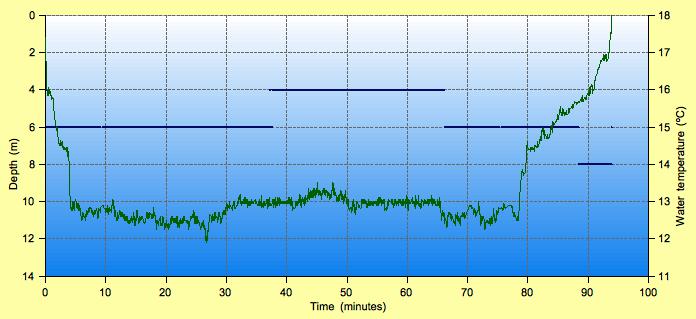
Tides at Botany Bay AEST
Note that tides at dive site may vary from above location.
Low
3:11am
0.15m
High
9:12am
1.50m
Low
2:51pm
0.38m
High
9:22pm
2.11m
Camera gear
Camera
Nikon D500
Lens
Nikon AF-S Micro Nikkor 60mm f/2.8G ED
Housing
Ikelite 6812.5
Lens port
Ikelite Flat Port 5502.41
Strobe
2 x Ikelite SubStrobe DS161
Photographs
Depth information, where present, indicates the depth of the camera when the photograph was taken and can be used to approximate the depth of the subject.
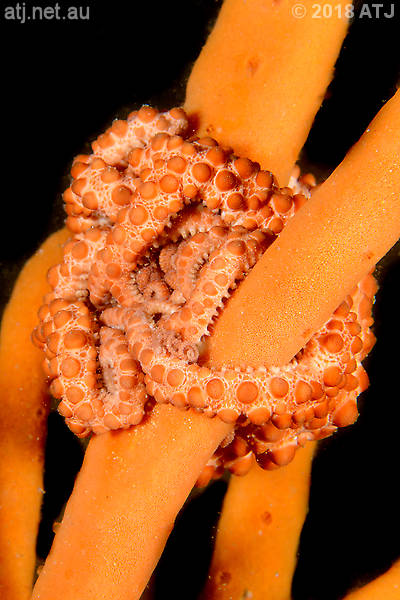
Basket star, Astrosierra amblyconus. 10.4 m.
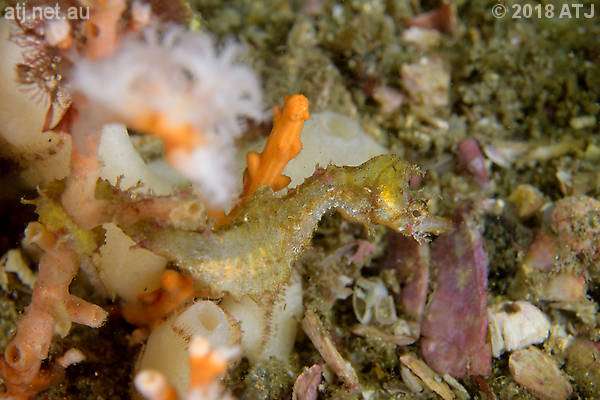
Male Sydney pygmy pipehorse, Idiotropiscis lumnitzeri, (IL2018071401). 10 m.
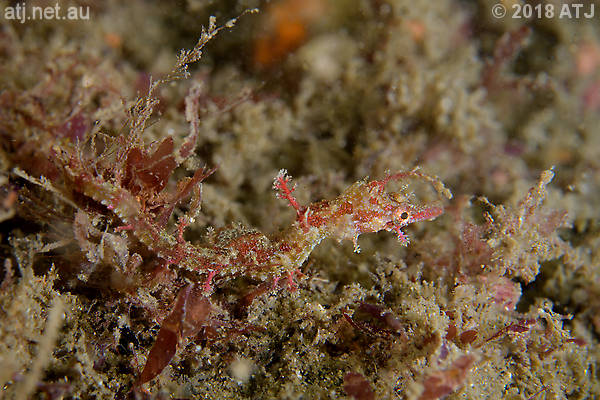
Female Sydney pygmy pipehorse, Idiotropiscis lumnitzeri, (IL2018071403). 9.9 m.
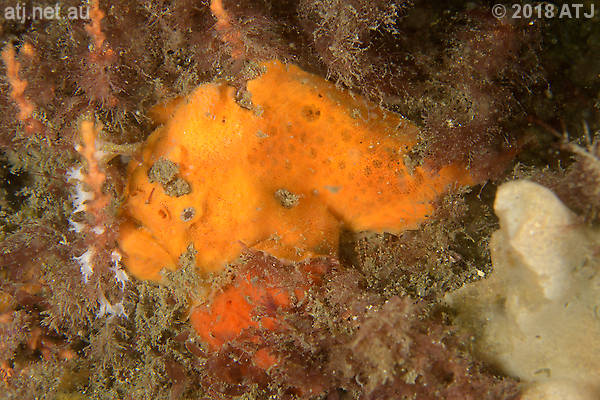
Red-fingered anglerfish, Porophryne erythrodactylus. 9.8 m.
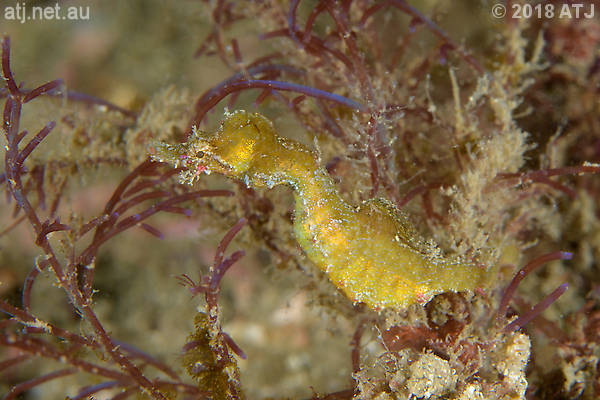
Male Sydney pygmy pipehorse, Idiotropiscis lumnitzeri, (IL2018071402). 10 m.
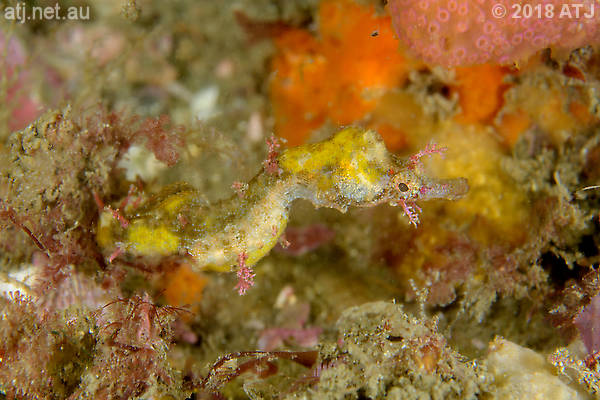
Female Sydney pygmy pipehorse, Idiotropiscis lumnitzeri, (IL2018053101). 10 m.
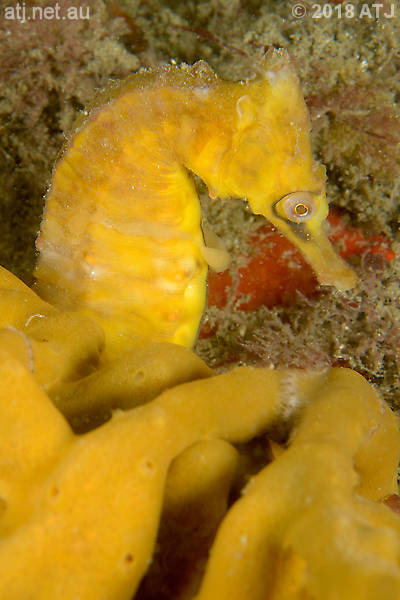
Female White's seahorse, Hippocampus whitei. 10.9 m.